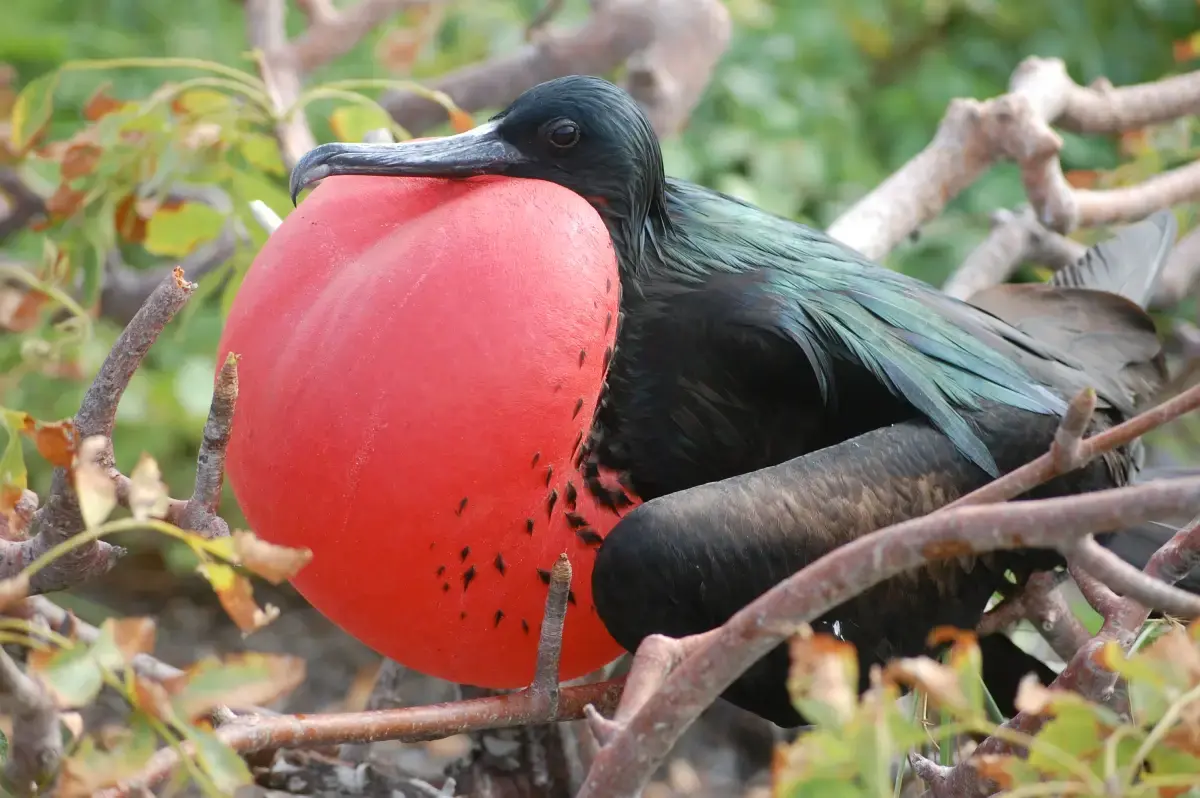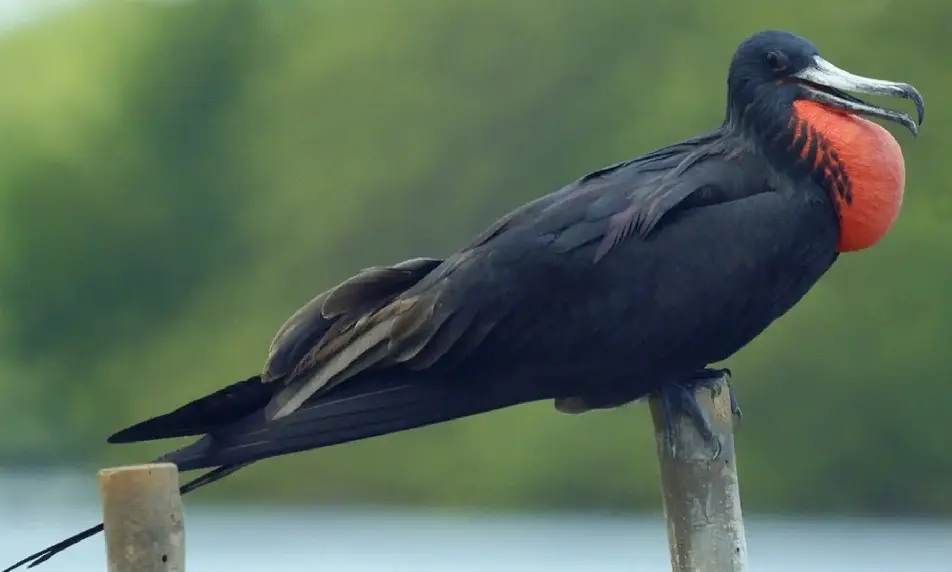Behavior
Magnificent Frigatebirds soar over the ocean on outstretched wings with their head drawn into the shoulders. They rarely flap their wings, but when they do their wingbeats are slow and deep.
Beachgoers delight in this large, black pterodactyl-like bird that soars effortlessly on tropical breezes with hardly a flap, using its deeply forked tail to steer. Watching a Magnificent Frigatebird float in the air truly is, as the name implies, magnificent. These master aerialists are also pirates of the sky, stealing food from other birds in midair. Males have a bright red pouch on the throat, which they inflate like a balloon to attract females. Females unlike most other seabirds look different than males with their white chest.



Magnificent Frigatebirds soar over the ocean on outstretched wings with their head drawn into the shoulders. They rarely flap their wings, but when they do their wingbeats are slow and deep.

Magnificent Frigatebirds are large seabirds with long, angular wings. They have a deeply forked tail that is often held closed in a point. The bill is long and sturdy with a prominently hooked tip.

Likes the weather in Isla Contoy National Park, in accordance with its decree of creation, is located in the municipality of Isla Mujeres, in the state of Quintana Roo.
Magnificent Frigate-birds range along coasts and islands in tropical and subtropical waters. They nest and roost in mangrove cays on coral reefs and in low trees and shrubs on islands. Magnificent Frigate-birds forage over warm oceans far out to sea, along the coast, and in shallow lagoons.
Magnificent Frigate-birds eat primarily flying fish, tuna, herring, and squid, which they grab from the surface of the water without getting wet. They also eat plankton, crabs, jellyfish, and other items on the surface of the water including discarded fish from fishing boats.
Magnificent Frigate-birds forage for themselves, but they also chase and harass other seabirds and frigate-birds forcing them to regurgitate recently captured meals, swooping down to steal the meal before it hits the water.
Magnificent Frigate-birds nest in dense colonies on top of low trees and shrubs on islands. Nests are packed into small areas and are often within striking distance of another nest. The female builds the nest on the display perch used by the male she chooses.
I'm baby pabst flexitarian mustache hammock, keffiyeh cold-pressed schlitz succulents bespoke lomo snackwave tote bag 3 wolf moon gochujang mixtape. Ugh hashtag mlkshk cold-pressed, live-edge williamsburg irony truffaut mustache pug. Cred forage disrupt, wayfarers lo-fi direct trade trust fund YOLO truffaut pork belly banjo selfies enamel pin hell of umami. XOXO marfa locavore synth franzen ethical salvia copper mug unicorn kogi letterpress. Taiyaki chambray tilde, lo-fi jean shorts fashion axe deep v authentic intelligentsia copper mug. Hoodie cloud bread banjo pork belly lyft.
Magnificent Frigate-birds are relatively common, but Partners in Flight lists them as Yellow Watch List species due to declining populations in the Americas. Magnificent Frigate-birds rate a 16 out of 20 on Partners in Flight Continental Concern Score.
The estimated global population is 59,000-71,000 breeding pairs. In areas where they breed, many populations are declining due to urban and resort development. Several islands in the Caribbean, including Marquesas Keys off of southern Florida, Aruba, and Seal Key in the Bahamas, no longer support breeding colonies following coastal development. Overfishing, predator introductions on nesting islands, and hurricanes may also reduce nesting success.
Soar along the coast in the southern United States, Mexico, and the Caribbean staying near water; a perfect excuse for a walk on the beach. They tend to take flight later in the afternoon when winds and thermals are greatest, helping keep them aloft. Look for their long and angular wings and slender silhouette soaring effortlessly alone or with a group of frigate-birds.
Reference source

Diana Gonzalez: Sep 18, 2025
Diana Gonzalez: May 20, 2025
Diana Gonzalez: May 5, 2025